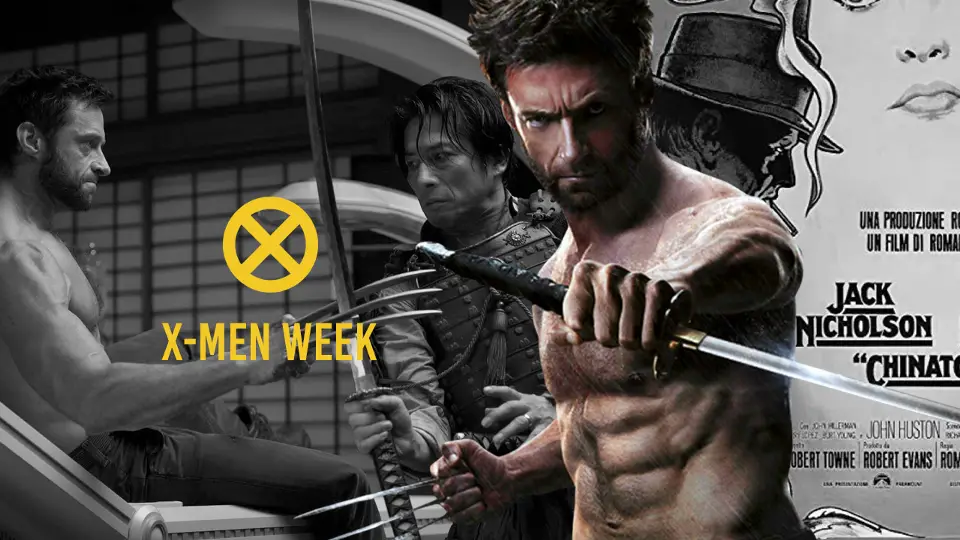X-Men Week: ‘The Wolverine’ & ‘Chinatown’ – Deconstructing Superhero Noir

In the week leading up to the release of Dark Phoenix, Full Circle are doing a series of articles culminating with our review of Dark Phoenix on Friday. This article is part 3 in a 5 part series. Read the previous entry here.
We are currently at a point in superhero cinema where characters and stories inspire to be more than what was coming from the pages of comic books. Avengers: Endgame bases itself in its own original story not told in comics. Spider-Man: Homecoming took inspiration from John Hughes movies. In fact, Logan – the most recent Wolverine solo film – was a western hiding behind a set of adamantium claws.
Before any of these, we had The Wolverine, the first X-Men film from director James Mangold that took a different step than the films before it. Whereas the previous X-Men films were standard (sometimes mediocre) blockbuster fare, including Wolverine’s own Origins movie, Mangold wanted to do something different with the character of James Howlett.
While Mangold took inspiration from several samurai films for The Wolverine, the one film that he drew influence from that will be the focus of this article is Chinatown, directed by Roman Polanski. Widely considered to be one of the greatest noir films of all time, Chinatown shares so much similarity with Mangold’s first X-Men outing thanks to the noir genre that dominated films like Chinatown. It was with The Wolverine that we finally our got our true first foray into a superhero film dipping into another type of genre and would help solidify not only the character of Wolverine in film, but also as Mangold as a director capable of telling a human story with superhuman characters.
In The Wolverine, we find James Howlett struggling with the weight of his actions in X-Men: The Last Stand and being alone out in the woods, surviving off of the wild. It isn’t until an old Japanese friend draws him into an unfamiliar world that Logan ends up being involved in a conspiracy filled with twists and turns. Meanwhile, all of this involves a mysterious female lead who Logan brings out of her shell and in turn humanizes him as well.
This noir structure of storytelling has so many parallels with Chinatown but still manages to do its own thing. While Jack Nicholson’s Jake Gittes is drawn in by Evelyn Mulwray which leads to the uncovering of a huge conspiracy, it is Nicholson’s interactions with his female co-star that drive the narrative forward. The same could be said about Logan and the film’s female star, Mariko. It is when our protagonists are lured into danger and intrigue that their paths cross, which allows for more human moments. In Logan’s case, it is his visit to Nagasaki which brings back a part of his past. It is with these smaller moments in this 2013 summer blockbuster that manage to make it more unique than the X-Men films before it.
The unpredictable twists and turns of Chinatown and the noir genre as a whole seep into The Wolverine, with shady businessmen and corporations lining themselves with gangs and Logan never knowing who to trust, with one cover-up after another. While there is a frustratingly basic and uninspired third act, the way it comes together is so much more inspired, showing that even the most invincible of characters can become more human.
Jack Nicholson’s Private Detective Jake Gittes and Hugh Jackman’s Wolverine both go through similar arcs in their respective films as well, starting off jaded and cynical but taking on more optimistic viewpoints at the end. While it may not end as well for Jake as it does for Logan, the way both characters learn to cope and move on with what they have is the common ground that the films have. On top of that, the noir style of storytelling has a large and looming effect on the protagonists of these stories.
I believe that it is thanks to the noir style of storytelling that makes The Wolverine and even Logan after it stand out among the ever-increasing library of superhero movies. In embracing the influence of noir films like Chinatown, The Wolverine goes a step further than the X-Men films that had come before it. In addition, it allows James Mangold to fully embrace the superhero genre prior to the genre masterpiece that is Logan. So despite the widely criticized third act, The Wolverine has enough going for it to make it one of the more distinct superhero films of the decade. While wholly different in story and aesthetic, both Chinatown and The Wolverine have a lot more in common than you think; and it’s all for the better.
Read the next entry into the series here.






